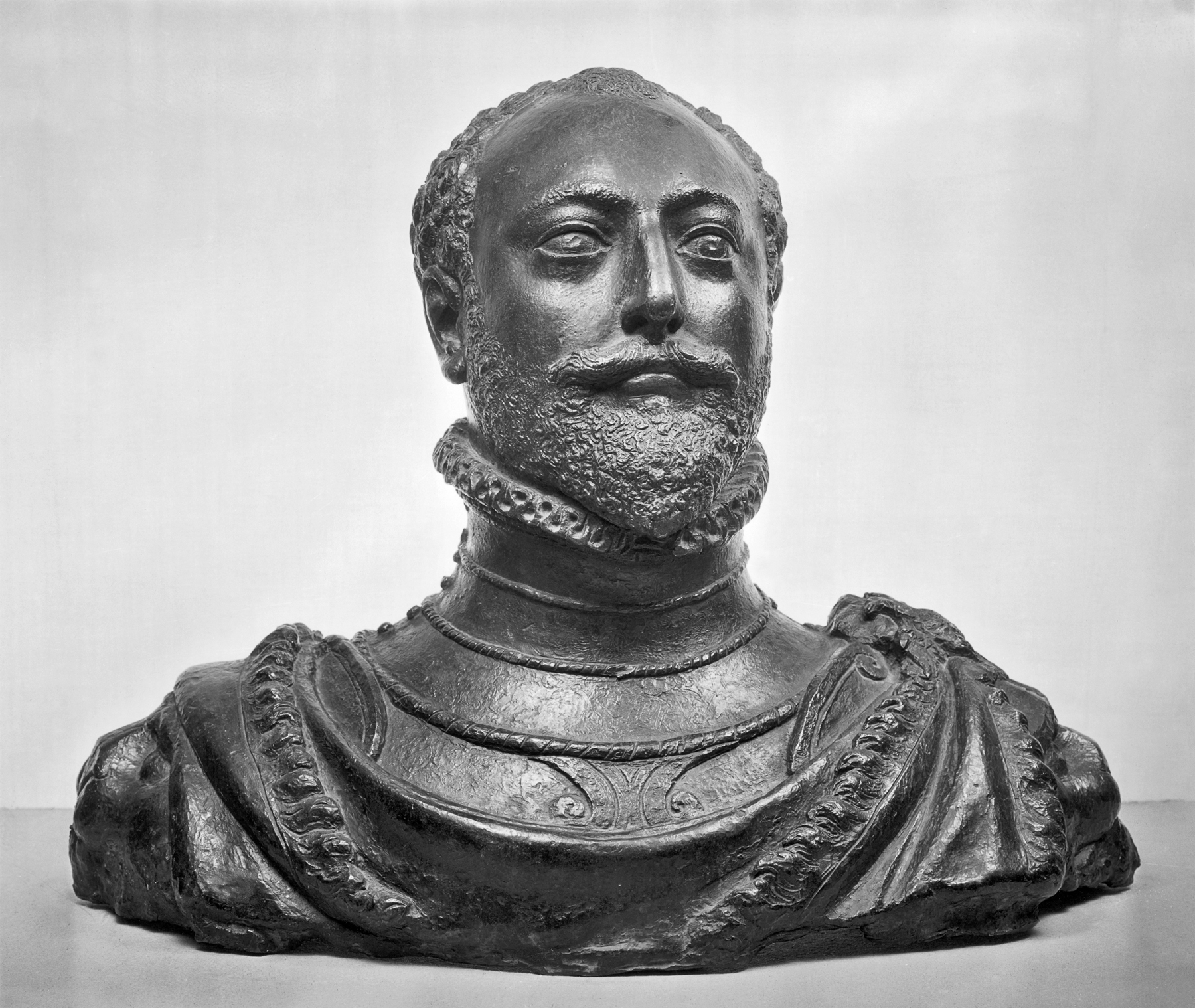Portrait of a Nobleman in Armor
(Renaissance Europe )
This unidentified nobleman with a pointed beard in the Spanish fashion wears armor embellished with a Habsburg double-headed eagle (indicating his allegiance to the dynasty that ruled much of Europe) and draped with a cloak, in the Roman style. The cloak is actually a lion skin, alluding to Greco-Roman myths of the demigod Herakles/Hercules, who wore the skin of a conquered lion and achieved divinity through "Herculean" acts of extraordinary strength and virtue. Hercules was frequently invoked within Habsburg court circles to underscore the family’s status and power.
The taste for bust-length portraits of powerful political figures was widespread in the 1500s, clearly influenced by the great number of Roman marble bust-length portraits that had been discovered in Italy among Roman ruins.
Characteristics of costume and hairstyle of this handsome but coarsely finished bust (the surface was never polished) suggest a general in the service of Spain, possibly in the Spanish Netherlands (now Belgium). In the years around the 1570s there were several such men in the Spanish government and armies there.
Provenance
Provenance (from the French provenir, 'to come from/forth') is the chronology of the ownership, custody, or location of a historical object. Learn more about provenance at the Walters.
Arthur Sambon, Paris (?); Henry Walters, Baltimore [date and mode of acquisition unknown]; Walters Art Museum, 1931, by bequest.
Conservation
| Date | Description | Narrative |
|---|---|---|
| 6/28/1971 | Treatment | cleaned |
Geographies
Spain
(Place of Origin)
Italy (Place of Origin)
Measurements
H: 17 1/2 in. (44.5 cm)
Credit Line
Acquired by Henry Walters
Location in Museum
Accession Number
In libraries, galleries, museums, and archives, an accession number is a unique identifier assigned to each object in the collection.
In libraries, galleries, museums, and archives, an accession number is a unique identifier assigned to each object in the collection.
27.409


